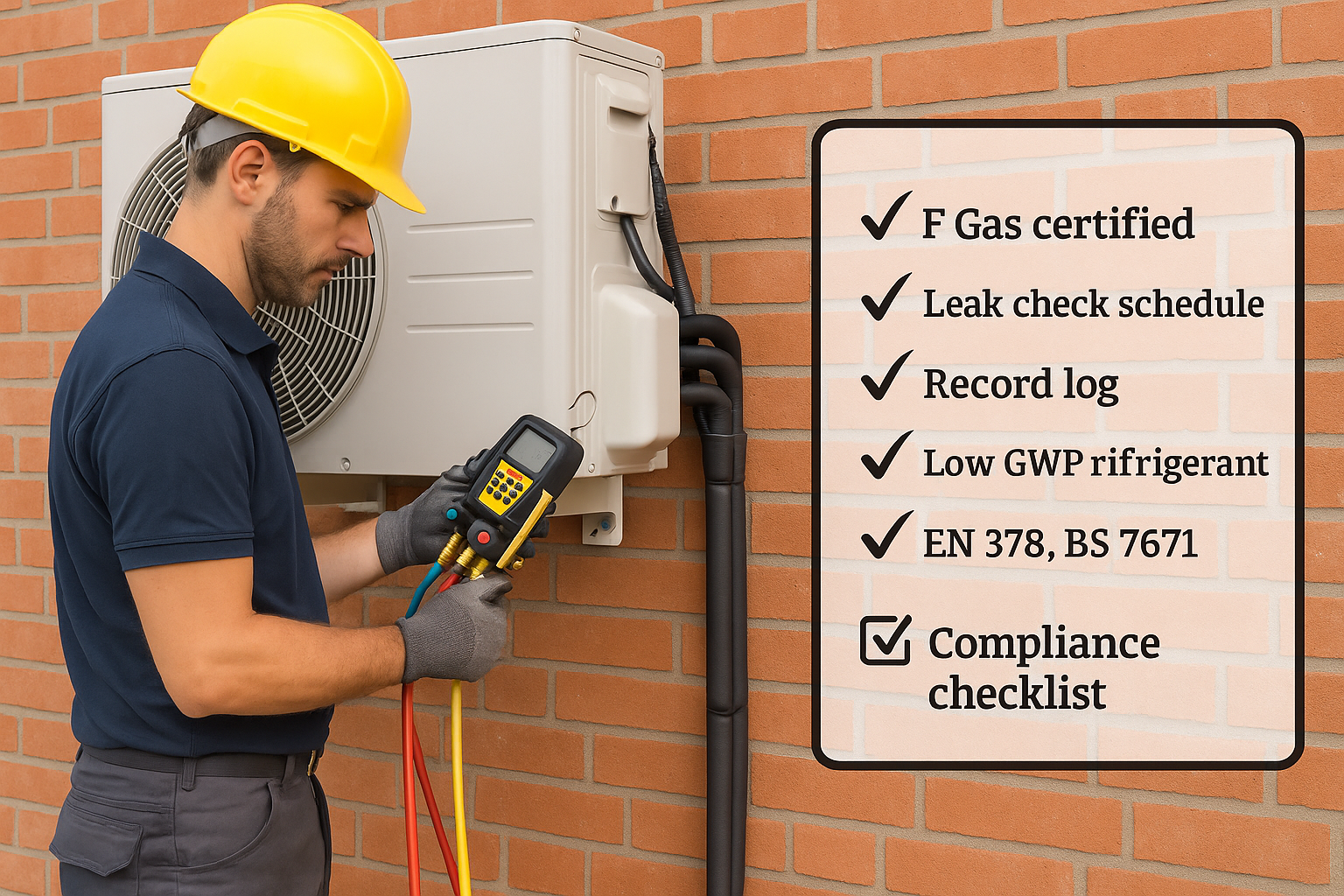Air conditioning systems containing refrigerants classified as F‑Gases can pose environmental risks if improperly handled. This guide explains key regulations and safety measures relevant to both homeowners and installers.
What are F‑Gases?
- Man-made refrigerants (e.g. R410A, R32) that can deplete ozone or contribute to greenhouse gases.
- Regulated under the UK/EU F‑Gas Regulation—covers leaks, recovery, record‑keeping.
Key Regulation Details
- Certified Installers Only: F‑Gas work requires qualified engineers.
- Leak Checking Requirements:
- ≥3 kg refrigerant: check every 12 mo.
- ≥30 kg refrigerant: check every 6 mo.
- Record Keeping: Log system capacity, leak tests, refrigerant used, recovered quantities.
- Bans & Phase‑Downs: High‑GWP refrigerants are being phased out—switch to lower GWP alternatives.
Safety Standards to Follow
- EN 378 compliance: Covers pressure and leak safety in refrigeration systems.
- Electrical safety: Must meet BS 7671 wiring regs.
- Noise levels: Recommended ≤60 dB(A) for residential areas.
Compliance Checklist
- Installer is F‑Gas certified
- Leak‑check schedule in place
- Record‑log accessible and up to date
- Low‑GWP refrigerants used
- System build follows EN 378 and BS 7671
Why It Matters
Ensures installations are safe, legal, efficient, and environmentally responsible—avoiding hefty fines, emissions and loss of warranty.

